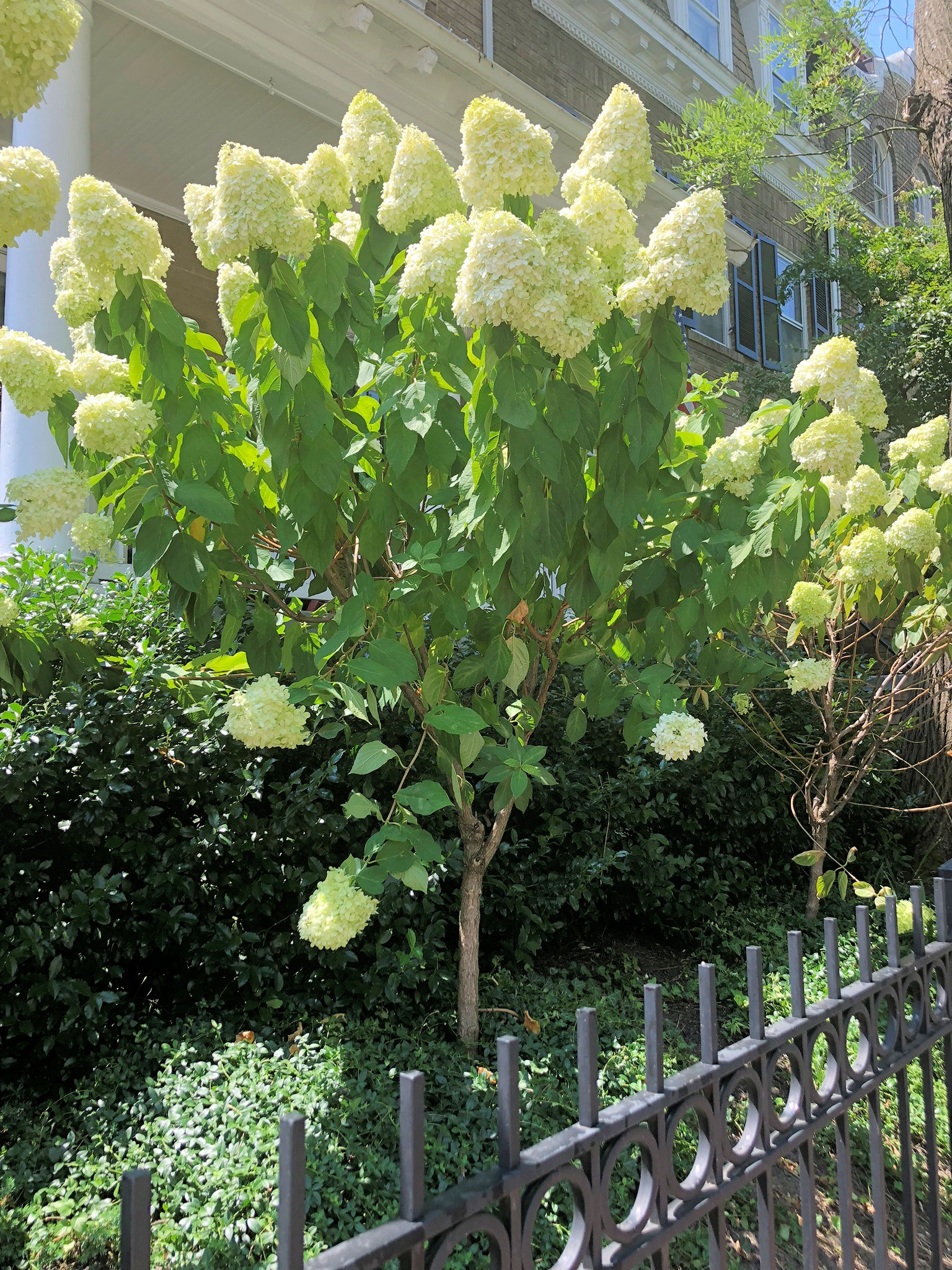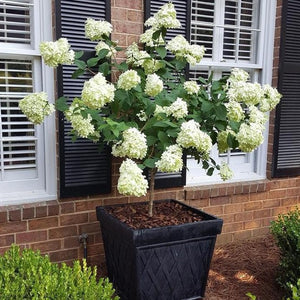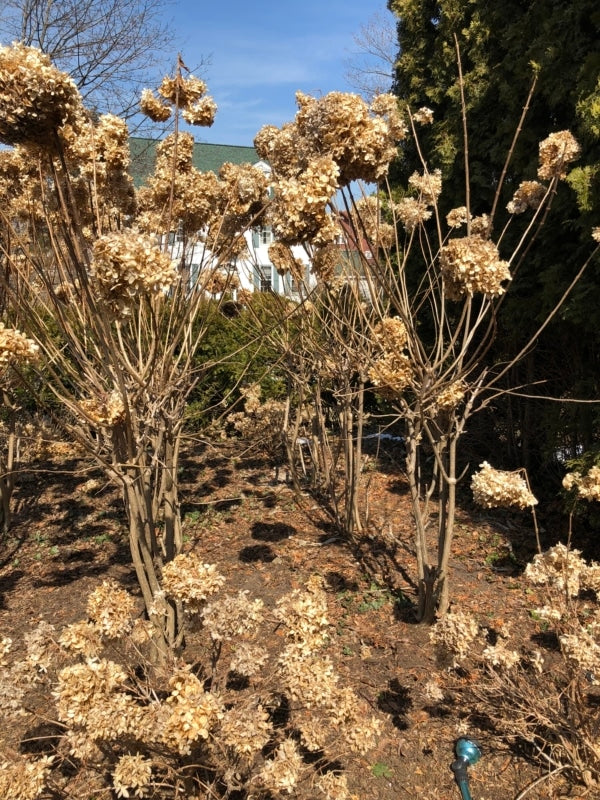Limelight Hydrangea Trees: The Showstopper Of Your Garden
Limelight Hydrangea Trees: The Showstopper of Your Garden
If you're looking for a showstopping addition to your garden, look no further than the Limelight hydrangea tree. This stunning variety is known for its enormous display of 10-inch, pale green blossoms each summer that transition to soft white, cream, and pink through fall.
Limelight hydrangea trees are easy to care for and can tolerate a wide range of conditions, making them a great choice for even the most novice gardener. They're also deer-resistant, so you can enjoy their beauty without worrying about the local wildlife.
In this blog post, we'll take a closer look at the Limelight hydrangea tree, including its history, growth habits, and care requirements. We'll also provide some tips for choosing the right location for your tree and for maximizing its blooms.
History of the Limelight Hydrangea Tree
The Limelight hydrangea tree was first introduced in 1978 by the Proven Winners plant company. It was a cross between two other hydrangea varieties, Hydrangea paniculata 'Grandiflora' and Hydrangea paniculata 'Tardiva'.
The Limelight hydrangea tree quickly became popular among gardeners for its large, showy blooms and its ease of care. It has since been awarded the Award of Garden Merit by the Royal Horticultural Society (RHS).
Growth Habits of the Limelight Hydrangea Tree
Limelight hydrangea trees grow to be 6-8 feet tall and 4-6 feet wide. They have a spreading, somewhat open habit and can be pruned to create a more formal shape.
The leaves of the Limelight hydrangea tree are dark green and oval-shaped. They turn a beautiful shade of red in the fall.
Blooming Habits of the Limelight Hydrangea Tree
Limelight hydrangea trees bloom from midsummer to early fall. The flowers are large, conical panicles that can reach up to 10 inches in diameter. They start out a pale green color and gradually fade to white, cream, and pink over time.
The flowers of the Limelight hydrangea tree are not fragrant, but they are very attractive to bees and butterflies.
Care Requirements of the Limelight Hydrangea Tree
Limelight hydrangea trees are easy to care for and can tolerate a wide range of conditions. They prefer full sun, but they can also tolerate partial shade. They are also drought-tolerant once established.
Limelight hydrangea trees do not require a lot of fertilizer. A light application of a balanced fertilizer in the spring will help to promote blooming.
Limelight hydrangea trees are relatively pest- and disease-free. However, they can be susceptible to powdery mildew. If you see signs of powdery mildew, you can treat it with a fungicide.
Choosing the Right Location for Your Limelight Hydrangea Tree
The best location for a Limelight hydrangea tree is in full sun or partial shade. The tree should be planted in well-drained soil.
If you live in a cold climate, you may want to plant your Limelight hydrangea tree in a protected location. The tree can tolerate temperatures down to -20 degrees Fahrenheit, but it is best to protect it from harsh winds and cold.
Maximizing the Blooms of Your Limelight Hydrangea Tree
There are a few things you can do to maximize the blooms of your Limelight hydrangea tree:
- Plant your tree in full sun or partial shade.
- Fertilize your tree in the spring with a balanced fertilizer.
- Water your tree regularly, especially during the summer months.
- Prune your tree in the spring to remove dead or damaged branches.
Conclusion
The Limelight hydrangea tree is a beautiful and easy-care addition to any garden. With its large, showy blooms and its deer-resistance, this tree is sure to be a showstopper.
If you're looking for a hydrangea that will add a touch of elegance to your garden, the Limelight hydrangea tree is the perfect choice.
Limelight hydrangea trees are a stunning addition to any garden. With their large, colorful blooms, they're sure to turn heads. But what if you want to learn more about these amazing plants? Where can you find the information you need?
One great resource is . This website has a wealth of information about limelight hydrangea trees, including their history, care requirements, and troubleshooting tips. You can also find beautiful photos of these plants, as well as helpful articles about how to use them in your landscape.
Another great resource is your local nursery or garden center. The staff at these businesses can answer your questions about limelight hydrangea trees and help you choose the right plant for your needs. They can also provide you with planting and care instructions.
No matter where you get your information, make sure to do your research before you plant a limelight hydrangea tree. These plants can be quite beautiful, but they do require some care. By learning about their needs, you can help ensure that your limelight hydrangea tree thrives for many years to come.
FAQ of limelight hydrangea trees
Question 1: What is a limelight hydrangea tree?
Answer: A limelight hydrangea tree is a deciduous shrub or small tree that is native to China. It is known for its large, conical flower clusters that bloom in late summer and early fall. The flowers are typically white or pale pink, but they can also be blue or purple depending on the soil pH.
Question 2: How do I grow a limelight hydrangea tree?
Answer: Limelight hydrangea trees are relatively easy to grow. They prefer full sun in cool climates, but they can also tolerate partial shade in warmer climates. They need well-drained soil and regular water. Limelight hydrangea trees are also relatively pest- and disease-resistant.
Question 3: What are the most common problems with limelight hydrangea trees?
Answer: The most common problems with limelight hydrangea trees are leaf scorch, chlorosis, and root rot. Leaf scorch can be caused by too much sun or heat, while chlorosis can be caused by a lack of iron. Root rot can be caused by poor drainage or overwatering.
Question 4: How do I care for a limelight hydrangea tree?
Answer: To care for a limelight hydrangea tree, you should:
- Water it regularly, especially during the first year after planting.
- Fertilize it in the spring with a balanced fertilizer.
- Prune it in the late winter or early spring.
- Protect it from pests and diseases.
Question 5: What are the different colors of limelight hydrangea trees?
Answer: The flowers of limelight hydrangea trees can be white, pale pink, blue, or purple. The color of the flowers depends on the soil pH. In acidic soil, the flowers will be blue. In neutral soil, the flowers will be pink. In alkaline soil, the flowers will be white.
Image of limelight hydrangea trees
5 different images of "limelight hydrangea trees" from Pinterest:
This image shows a mature limelight hydrangea tree in full bloom. The flowers are a beautiful pale green color that will eventually transition to soft white, cream, and pink through fall.
This image shows a limelight hydrangea tree in a garden setting. The tree is surrounded by other flowers and plants, and the flowers of the limelight hydrangea tree are a beautiful contrast to the other colors in the garden.
This image shows a limelight hydrangea tree in a pot. The tree is a great choice for people who do not have a lot of space, and it can be easily moved around to different locations in the garden.
This image shows a limelight hydrangea tree in winter. The leaves of the tree have fallen off, but the bare branches are still a beautiful sight.
This image shows a limelight hydrangea tree in a landscape setting. The tree is a great addition to any landscape, and it will provide beautiful flowers for many years to come.





Post a Comment for "Limelight Hydrangea Trees: The Showstopper Of Your Garden"